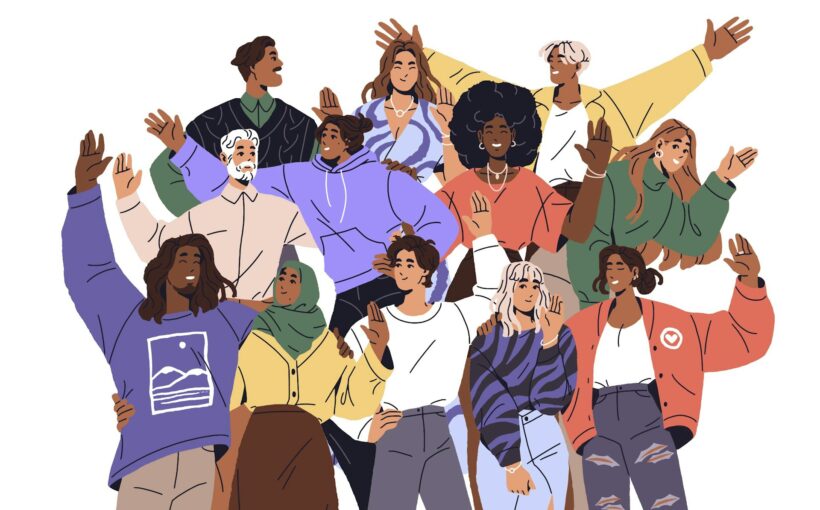
Hi. Or should that be: hello? Or: hey? Or: yo? Or: ’sup? In English, there is no shortage of ways to greet someone casually or informally – and most English speakers will use one or more of these greetings every day.
Of course, English also has a number of formal or respectful greetings, such as “How are you?” and the now slightly dated: “How do you do?” But while these may appear to be inquiries into someone’s wellbeing, they are normally used to demonstrate politeness in greeting rather than a genuine interest in and concern for others.
It seems that when greeting someone in English, our choice is between the informal and the insincere. If languages reflect the culture and values of their speakers, this suggests English-speaking regions value informality and insincerity, or, with a more positive spin, simplicity and politeness.
Outside of English, there are many greetings that provide unique glimpses into the cultures of their speakers, reflecting different traditions and ways of acknowledging, respecting and honouring others.
For example: the Arabic greeting “as-salāmu ‘alaykum” (peace be upon you) follows the instruction in the Qur’an (24.61) for Muslims to “give greetings of peace upon each other – a greeting from Allah, blessed and good”. The Sanskrit greeting “namaste” (a bow to you) is often accompanied by a slight bow and pressing the palms together in a sign of respect and deference.
And in cultures that prize hospitality and the importance of communal eating, it is common to find greetings that mean “have you eaten?”, such as the Mandarin “nǐ chī le ma” and the Korean “bap meogeosseoyo”“, though both are often considered equivalent to the English “how are you?” or “hello”.

There are even greetings that arise from and reflect a culture’s philosophy or way of life. For example, in Zulu, the traditional greeting is “sawubona”, which means “I see you”. Not in the sense of “I have spotted you”, “I have glanced at you”, or “I see what you are up to”. Rather, it means “I see you” in the sense of recognition or acknowledgement.
This greeting captures the idea that I recognise your dignity, your value, your worth as a person. It’s an idea that lies at the heart of Ubuntu, a traditional African philosophy, or way of life, that recognises human beings as deeply interconnected and interdependent and so emphasises humanity towards others.
In English-speaking countries, the idea of “I see you” as a greeting will be familiar from the Avatar films, in which it is the usual greeting between those in the Na’vi culture. So when it is said to the human character, it shows he is accepted and respected by the Na’vi – they see him, they recognise him, they acknowledge him. The Avatar films probably borrow the idea from the Zulu greeting.
Other greetings from Africa also reflect Ubuntu. For example, consider an evening greeting between close friends or family members among the Shona people of Zimbabwe:
You: Maswara sei? (How was your day?)
Me: Taswera kana maswerawo. (It was a good day if your day was also good.)
To English speakers, this might seem like an odd response. You asked me about my day, and if my day was good, then surely my day was good regardless of whether yours was. Such thinking reflects the individualism prevalent in English-speaking countries.
The Shona view, which squarely captures the essence of Ubuntu, is that we are interconnected first and foremost, and this comes through in the response. Since the person asking the question is a close friend or family member, whose life is deeply intertwined with mine, what sort of day this person had will have a huge bearing on how my day went, and my reply captures this. If they had a good day, then so did I, but if they did not then I did not. One person’s wellbeing depends upon the wellbeing of others.
Is there a European language with a greeting that recognises the interrelation and interdependence of people in a similar way? Yes: Latin.
In ancient Rome, the greeting “Si vales, bene est; ego valeo” (If you are well, it is well, and I am well too) was used by Cicero and Pliny the Younger, among others.
However, two common practices blunted its effect. First, the greeting was usually written at the start of a letter rather than delivered face to face, making it difficult to determine the sincerity of the greeter (much like with the overused “I hope this finds you well” in today’s emails).
And second, the greeting was commonly abbreviated to “S.V.B.E.E.V”, giving it a very formulaic appearance, quite contrary to the thoughtfulness and respect embodied by the Shona greeting.
As we navigate our globalised world, perhaps we can learn from these diverse greetings – and make our own a little more meaningful.
![]()
Lloyd Strickland would like to thank Owain Daniel Jones for his advice and assistance in writing this article.



